Managing Asthma in the Prehospital Environment
VerifiedAdded on 2024/07/22
|9
|1311
|98
AI Summary
Asthma is a common respiratory condition that can lead to hospital admissions. This paper explores the prehospital management of asthma, including its causes, pathophysiology, and treatment options. It emphasizes the importance of early intervention, proper monitoring, and patient education in preventing severe exacerbations and reducing the need for hospitalization. The paper also discusses the role of pharmacological therapy, including inhaled beta-agonists and corticosteroids, in managing asthma symptoms.
Contribute Materials
Your contribution can guide someone’s learning journey. Share your
documents today.
1 out of 9
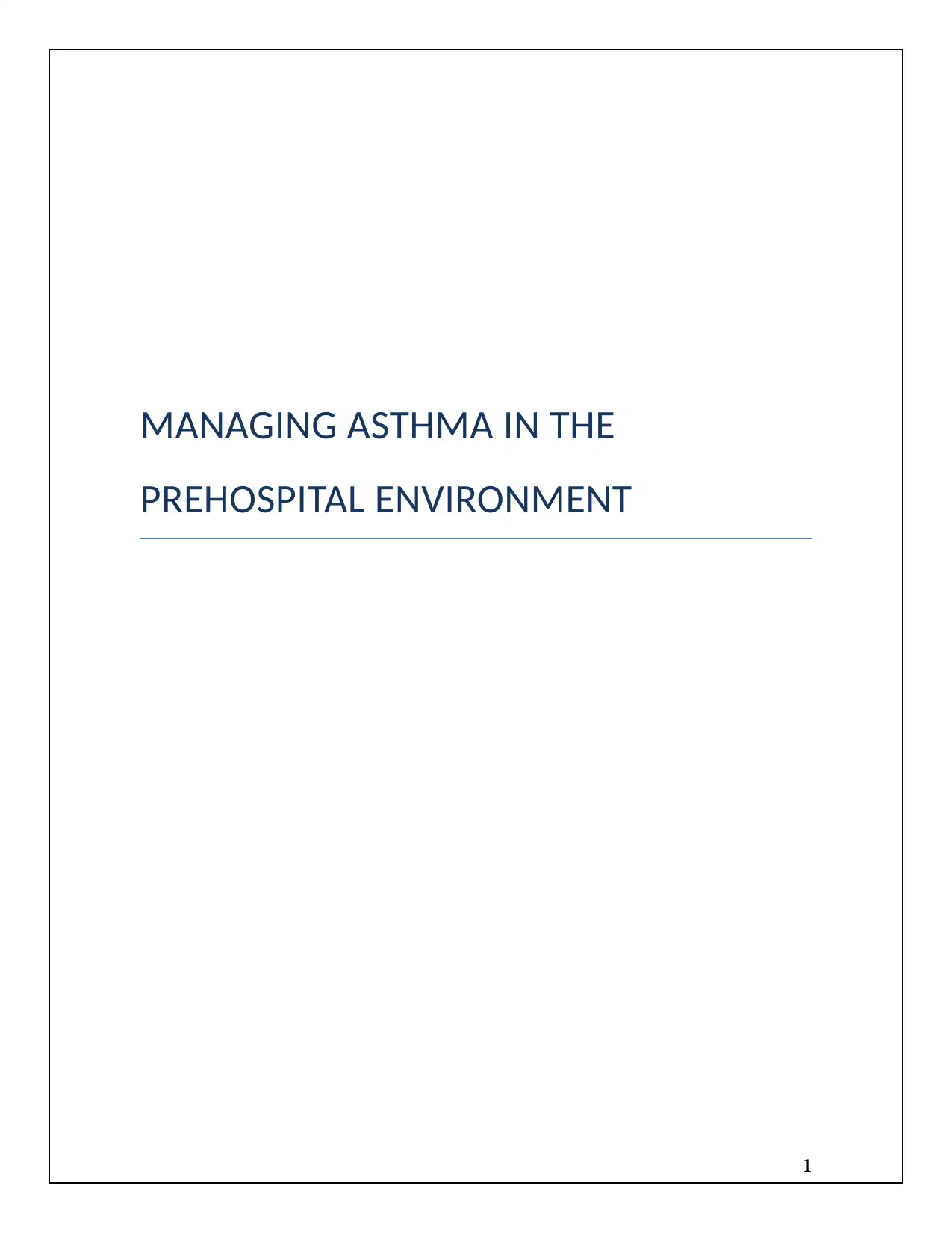
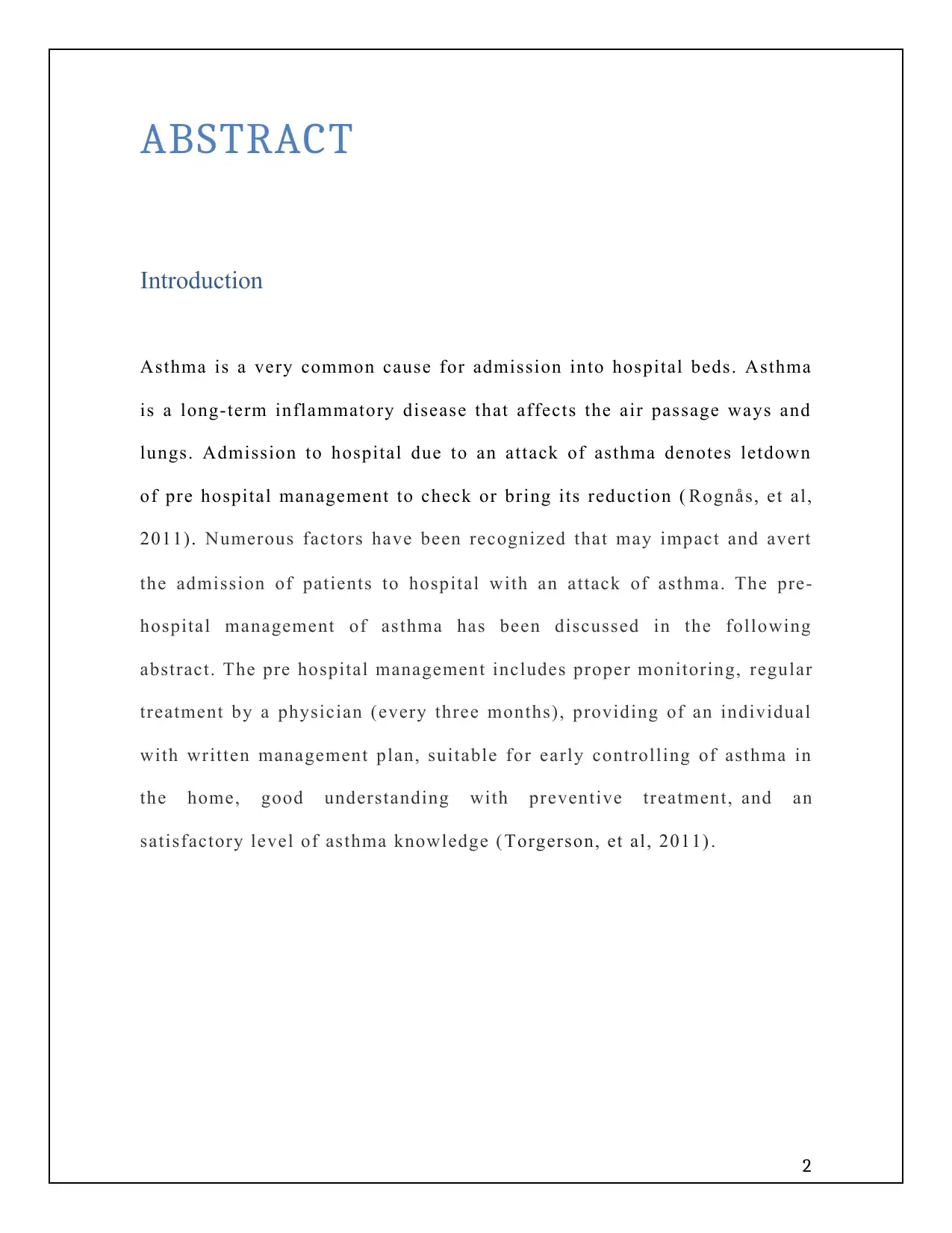
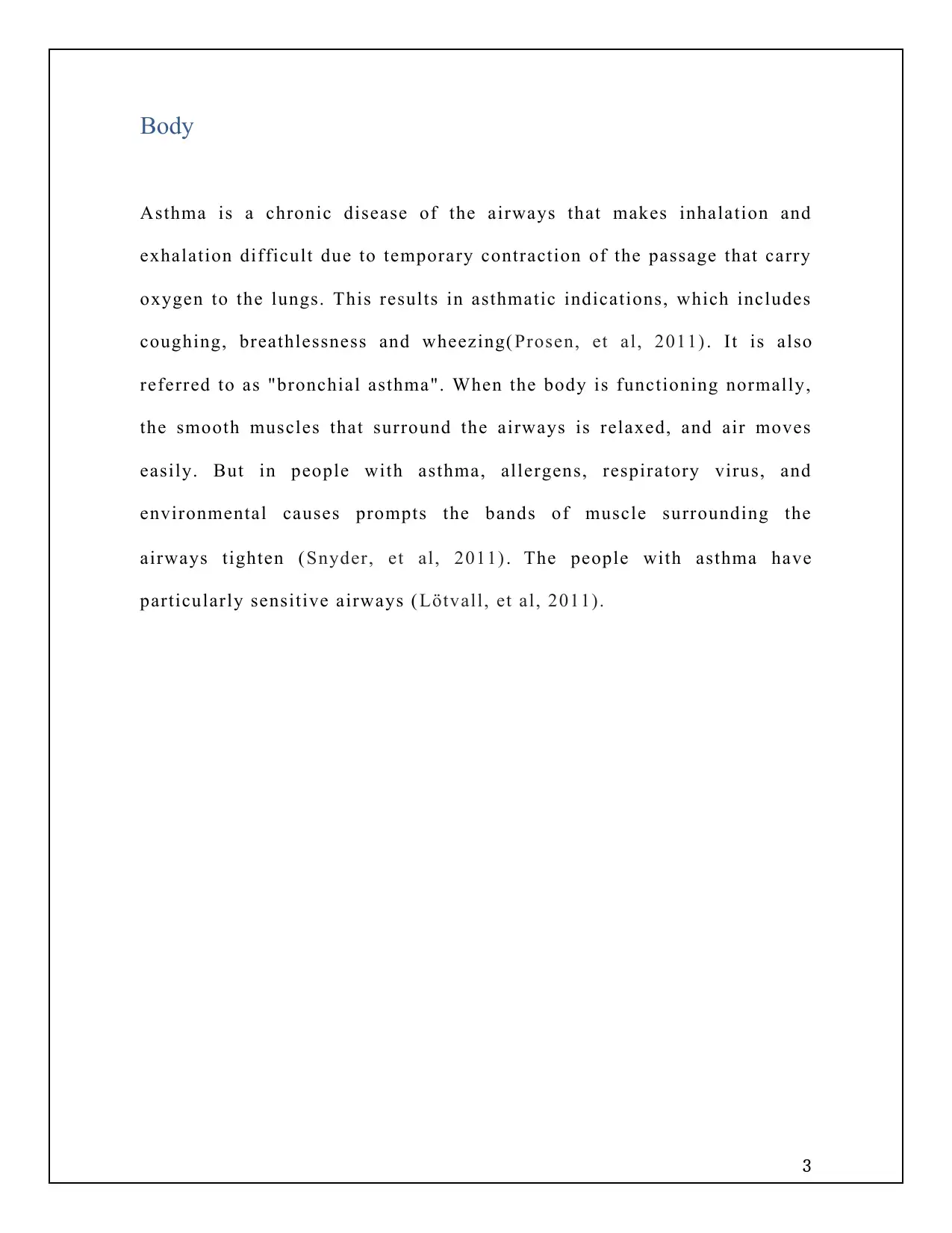

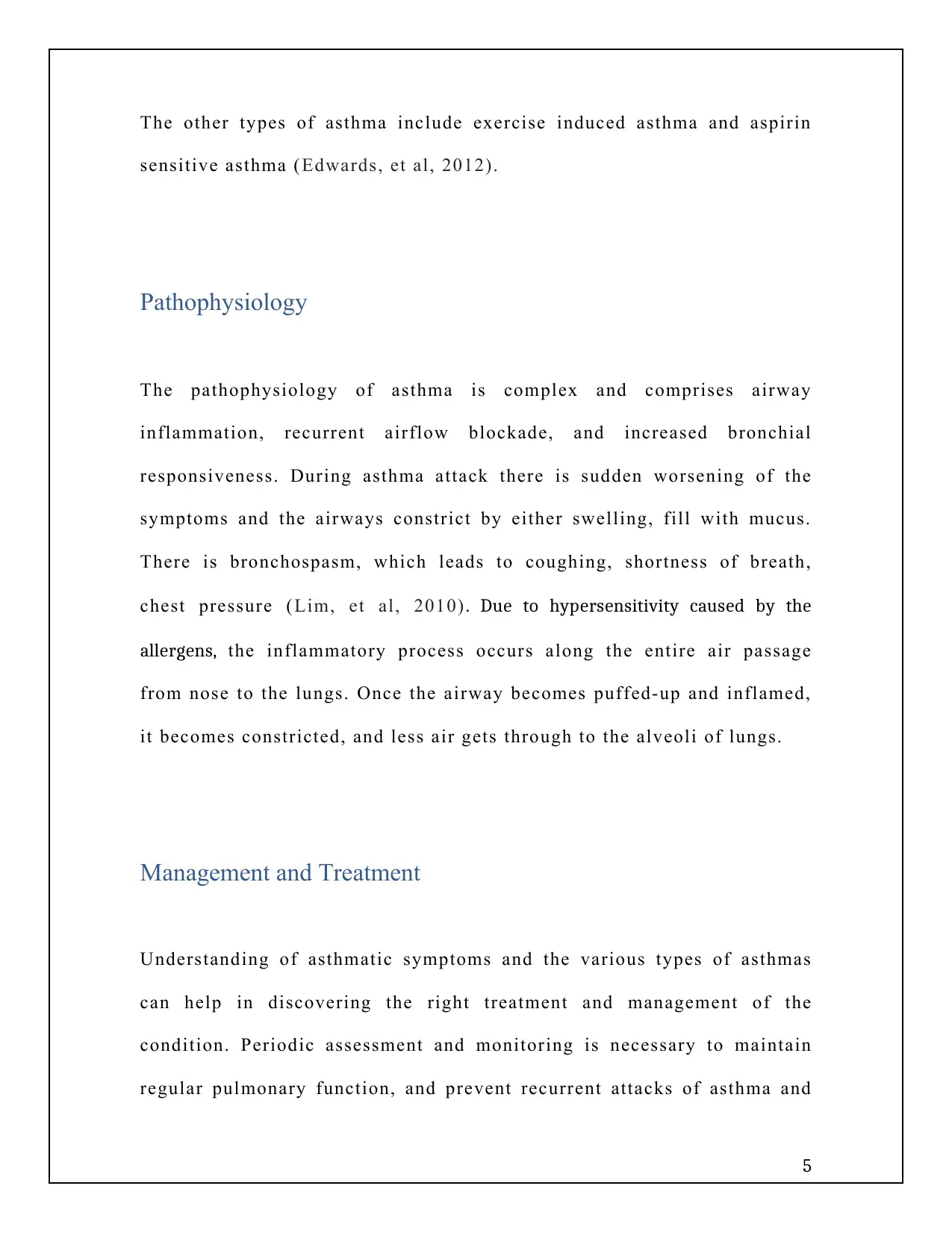
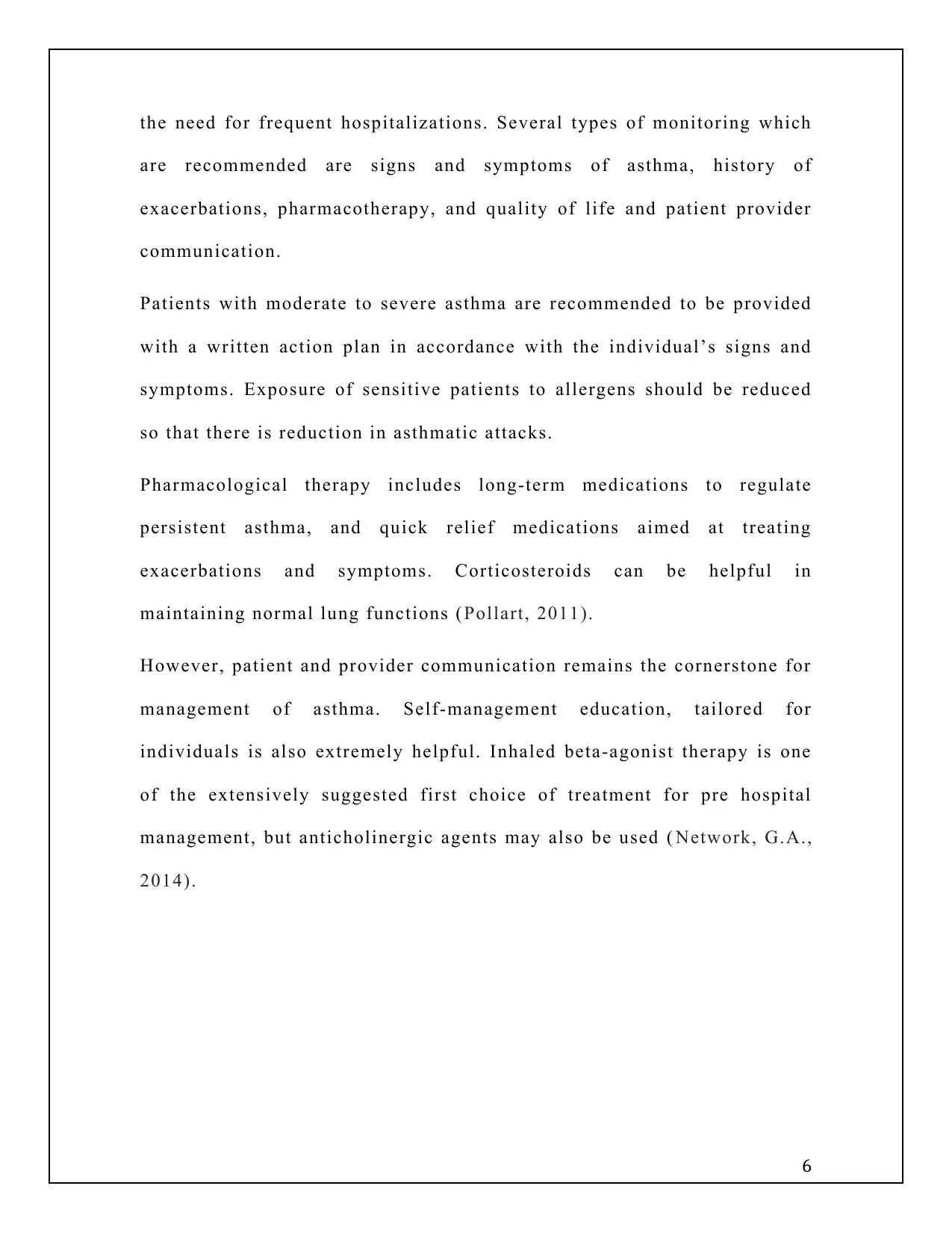
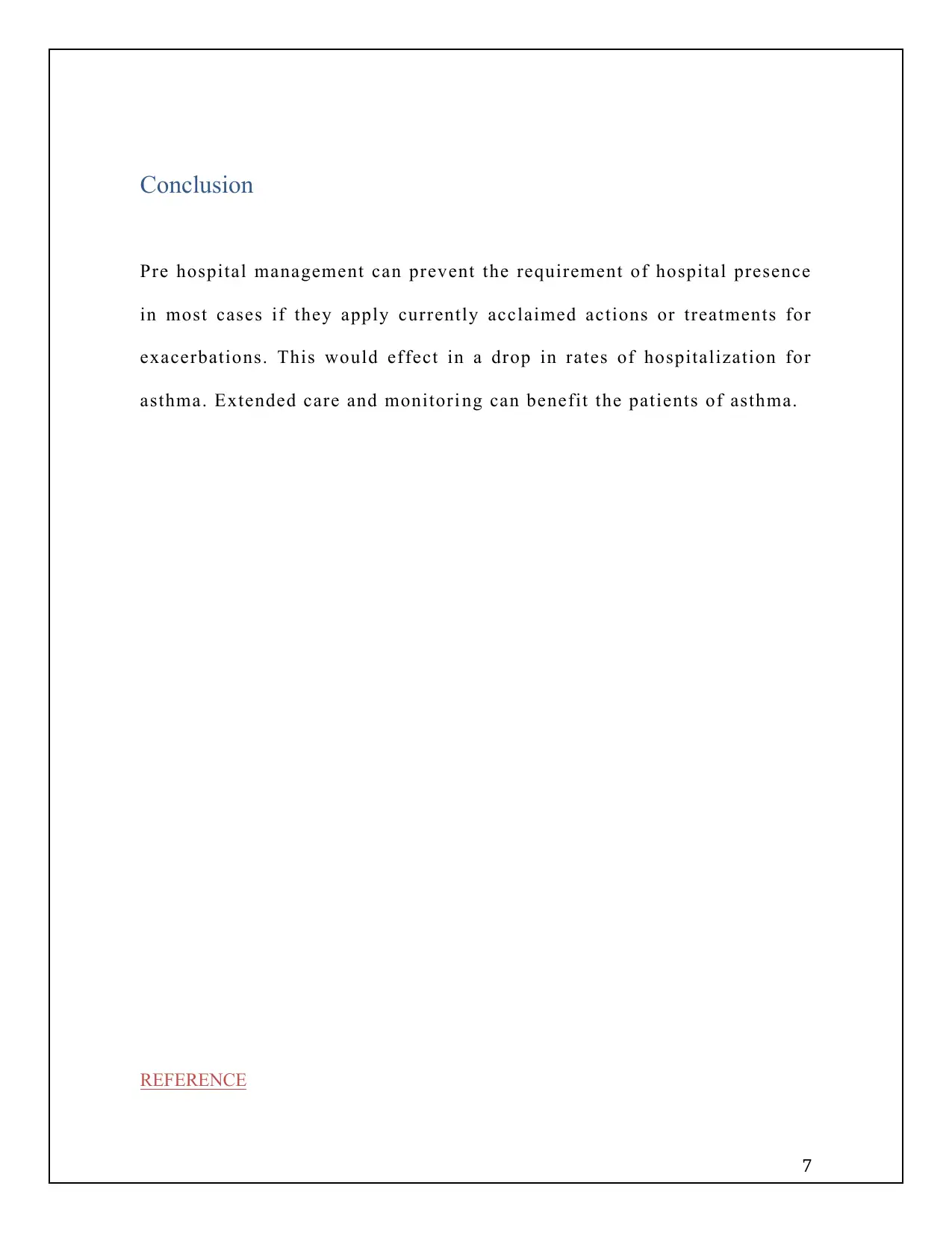
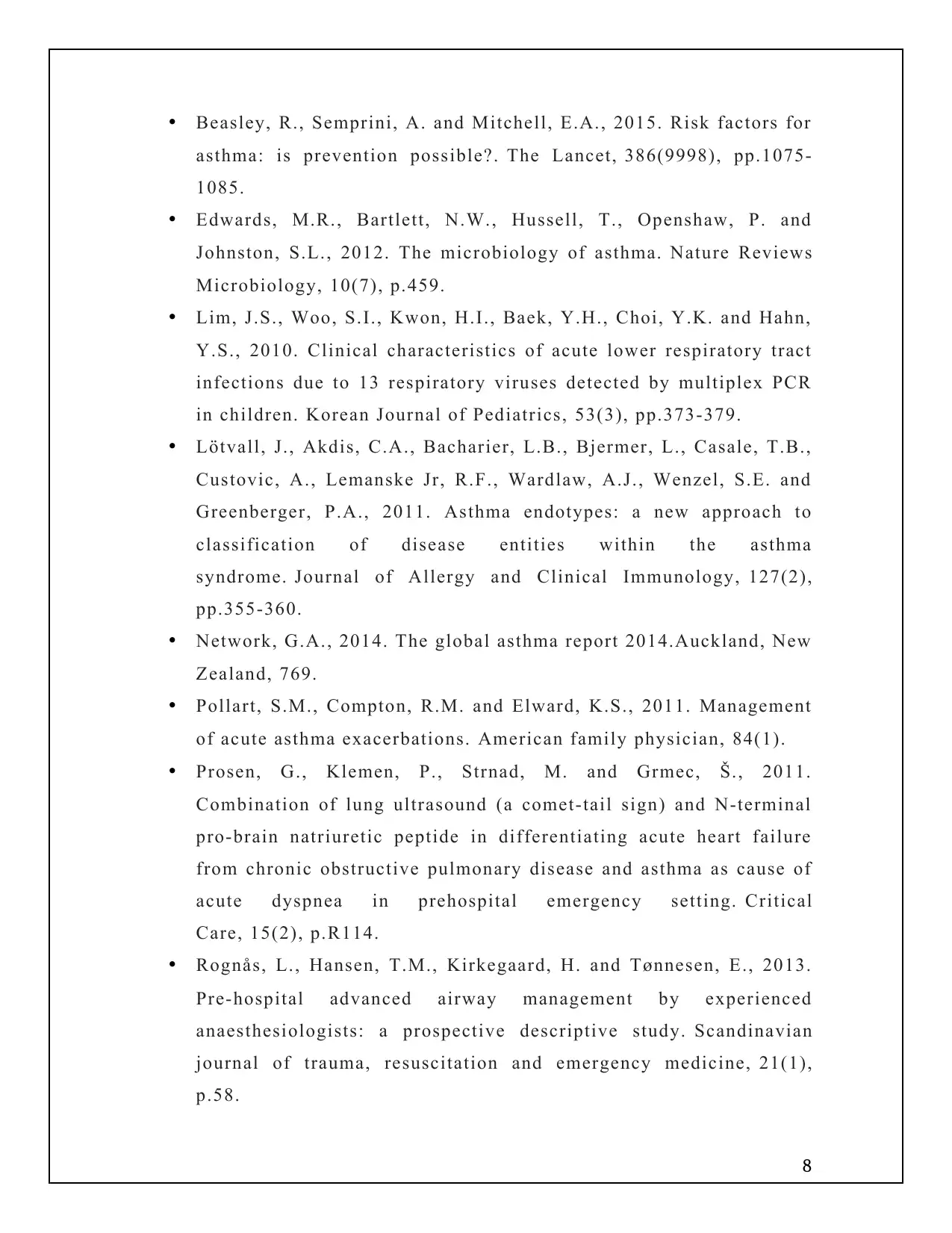
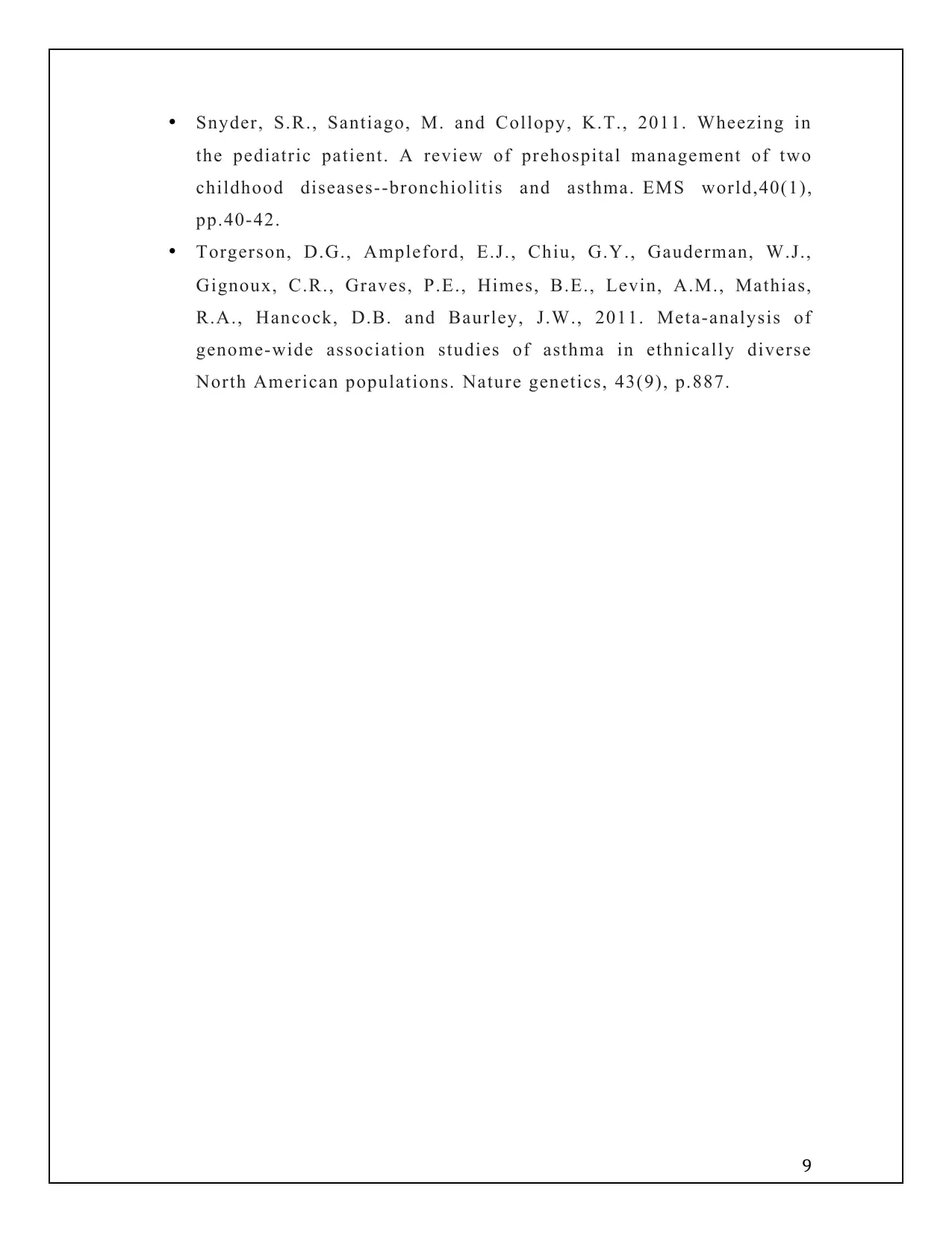






![[object Object]](/_next/static/media/star-bottom.7253800d.svg)